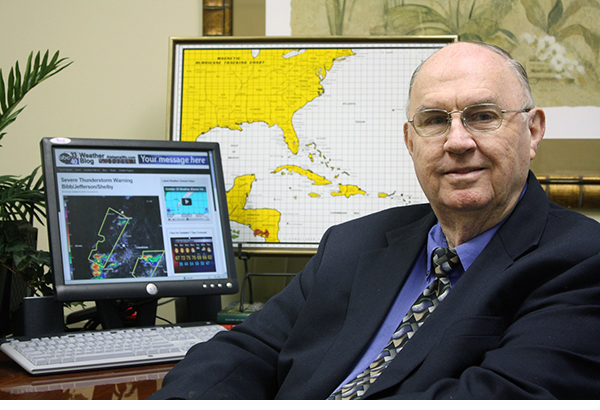The Devastating EF-5 Joplin Tornado
(Photo Credit: NWS, University of Wisconsin-Madison)
May 22md marked the 7th anniversary of when the city of Joplin, Missouri was impacted by the deadliest and most damaging tornado since records began in 1950. At its peak, this EF-5 tornado was nearly a mile wide, with winds of 200+ miles per hour. From start to finish, the tornado tracked a path stretching 22.1 miles, resulting in 158 deaths and over 1000 reported injuries.
On May 22nd, 2011 at 5:34 p.m, a supercell dropped a tornado just east of the Missouri-Kansas border. This tornado tracked due east near 32nd street where storm chasers and eyewitnesses had reported seeing multiple vortices around the main circulation, a typical sign that the tornado is rapidly strengthening and getting larger in size, and right before the tornado became rain-wrapped.
Sirens sounded 20 minutes before the tornado struck Joplin as tornado warnings were issued by the NWS office in Springfield, MO. The tornado intensified into an EF-1 as it started to plow through rural areas. From there, the tornado continued to track east as it made its way along 32nd street, where evidence of EF-2 damage was surveyed. At this point in the tornadoes’ lifespan, it was near a ¼ mile wide. This was only just the beginning.
Once it crossed 32nd street, the tornado strengthened from an EF-3 to an EF-4 from surveyed damage. At this point the storm was showing a textbook tornadic supercell signature on radar. The radar picture below depicts what a thunderstorm looks like if it is about to or has produced a tornado. If you take a closer look at the radar scan, you can see a purple circle at the end of the hook. In meteorology, this is classified as a debris ball, a sign that the tornado is strong enough to pick up debris off the surface and fling it into the air.
The tornado continued to move east toward McClelland Boulevard at 20 to 25 miles per hour where it was approximately ¾ to a mile wide. Once it passed this area, St. John’s hospital was heavily damaged, and the tornado leveled homes which were swept off their foundations.
Two schools in Joplin, East Middle School and Joplin High School both suffered major damage from the tornado. The newest part of the high school, the Franklin Technical Center, was destroyed. More EF-4 damage and even low-end EF-5 damage was surveyed along the intersection of South Rangeline Road and 20th street as the tornado continued to destroy well structured establishments.
As the tornado passed the city of Joplin, it began to weaken substantially. The tornado finally lifted roughly 5 miles northeast of Granby and east of Diamond, MO around 6:12 p.m. Along the tornado’s path, approximately 6,950 structures were destroyed, and resulting in a staggering number of injuries and lives lost. The costliest tornado in American history, the Joplin Tornado totaled up to $2.8 billion in damage. According the American Red Cross, about 25% of the city was destroyed as of a result of this tornado.
Weather Channel’s Mike Bettes appeared on the air to report live from the scene. Struggling to keep his composure, he emotionally reported the destruction that occurred in the city of Joplin. During his broadcast he becomes speechless and starts to tear up. After a moment, he regains himself, chokes back his emotions, and continues his report. The scar this tornado left on the city of Joplin may never be forgotten. Fast forward to 2018, it is amazing to see how this city has grown since this tragedy. Neighborhoods have been rebuilt, and a few memorials have been built around Joplin to remember all of the lives that were lost.
To learn more about severe storms, please click here!
©2018 Meteorologist Joseph Marino
AlabamaWX is pleased to partner with the Global Weather and Climate Center team for outstanding posts about our atmosphere. Visit them at https://www.globalweatherclimatecenter.com for more great information!
Category: Partner News Stories

















